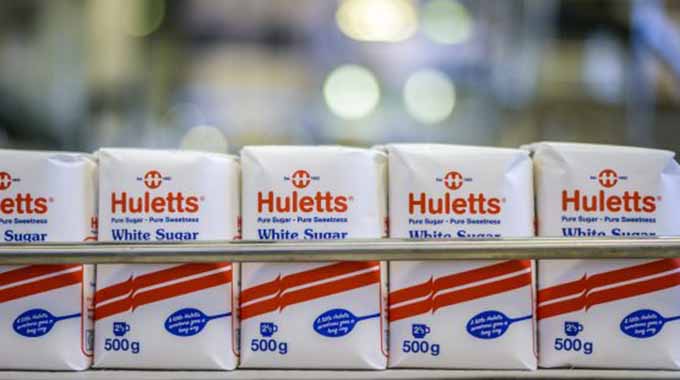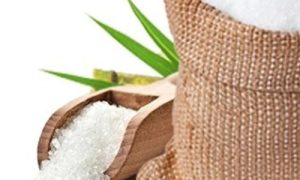Tongaat expects sugar output to increase

Zimbabwe is expected to produce 400,000 tonnes of sugar worth over US$380 million this year, with increased output from Hippo Valley and Triangle mills, owned by Tongaat Huletts Zimbabwe. Benefiting from land reform, 1,200 outgrower farmers supply 40% of the cane. Despite challenges like mill breakdowns and high production costs, sugar output is projected higher than last year’s 370,000 tonnes. Tongaat’s operations include sugar and electricity production, utilizing water from major dams for irrigation.
Zimbabwe is this year projected to produce 400 000 tonnes of sugar worth over US$380 million as the industry continues to show resilience in the face of challenges that were limiting sugarcane production in the Lowveld.
The country’s sugar is milled at Hippo Valley and Triangle mills that are owned by Tongaat Huletts Zimbabwe. Around 1 200 outgrower farmers, who benefited from the country’s land reform, account for 40 percent of the cane supplied to the mills, while Tongaat accounts for the remaining 60 percent.
Tongaat and outgrower farmers own cane plantations at Mkwasine,Triangle and Hippo Valley estates and the two mills in the Lowveld have an installed capacity of about 600 000 tonnes annually.
Sugar output is still projected to be marginally higher this year for the 2023-2024 milling season, compared to the previous year with Tongaat estimating output hovering between 395 000 and 400 000 tonnes.
Last year total sugar output in Zimbabwe was around 370 000 tonnes, with recurrent mill breakdowns at both Triangle and Hippo Valley blamed for the cut back, amid shortages of foreign currency to procure spares. Sugar prices were also low, hitting producers hard and affecting working capita availability as cheap imports into the country forced Zimbabwe to export most of the product to non-lucrative markets.
Tongaat chief executive officer Mr Tendai Masawi told the media over the weekend during a tour of the company’s operations in the Lowveld that sugar output was likely to be marginally higher than last season.
“There was some carry over cane from last year because we faced recurrent mill breakdowns, but I am happy that we managed to repair our mills and right now they are in good condition,’’ he said.
“This year we are expecting to produce between 395 000 and 400 000 tonnes of sugar after both our mills at Triangle and Hippo crash about 1,6 million tonnes of sugar cane each. The sugar we expect to produce will be valued at around US$383 million.’’
Mr Masawi expressed optimism that his firm and outgrower farmers would get better returns this year from their sugar if cheap imports remained shut out from the country. Zimbabwe produces fortified sugar, which is of high demand globally and last year the Government opened the door to imports to deal with shortages as a result of mill breakdowns.
High costs of production, especially inputs such as fertilisers and power for irrigation means locally-made sugar is more expensive.
Zimbabwe requires 300 000 tonnes of sugar annually for domestic consumption and surplus sugar is exported mainly to meet quotas in the US and the European Union.
Mr Masawi said the sugar milling business required foreign currency to procure key spare parts to service the two Tongaat-owned mills at Triangle and Hippo Valley.
“We were forced to export some of our sugar at low prices compared to the local market because we wanted to raise foreign currency to repair our mills. Our mills require spare parts that are imported and we have to export to get that foreign currency.”
He said the irrigation water supply was favourable because of abundant water in Tugwi-Mukosi and Lake Mutirikwi — the country’s two largest interior dams. The dams hold from three to three and half years supply of irrigation water.
“The challenge we have with water for irrigation is with the Mkwasine area which relies on Manjirenji and Siya Dams for water supply. Those water systems have around six months supply of irrigation water which means we cannot expand irrigable land under sugarcane there because the water is limited,’’he said.
Tongaat also remained committed to the US$40 million Kilimanjaro Sugar Cane project being developed in a partnership with Government and local financial institutions to empower Zimbabweans.
Chiredzi West National Assembly legislator, Darlington Chiwa said it was imperative to make sure the sugar industry in the Lowveld starts to accrue benefits from the designation of sugarcane by the Government as a strategic crop.
The Lowveld sugar industry was one of the few Zimbabwean industries that have shown resilience despite challenges such as high operating costs and recurrent power outages.
Besides producing sugar, Tongaat also produces electricity, from a cane by-product called bagasse, which it uses to power its two mills at Triangle and Hippo Valley. The two mills produce a combined 10MW excess power which is fed into the national grid during the milling season that runs annually from April to December.
Source link : https://www.herald.co.zw/tongaat-expects-sugar-output-to-increase/

















